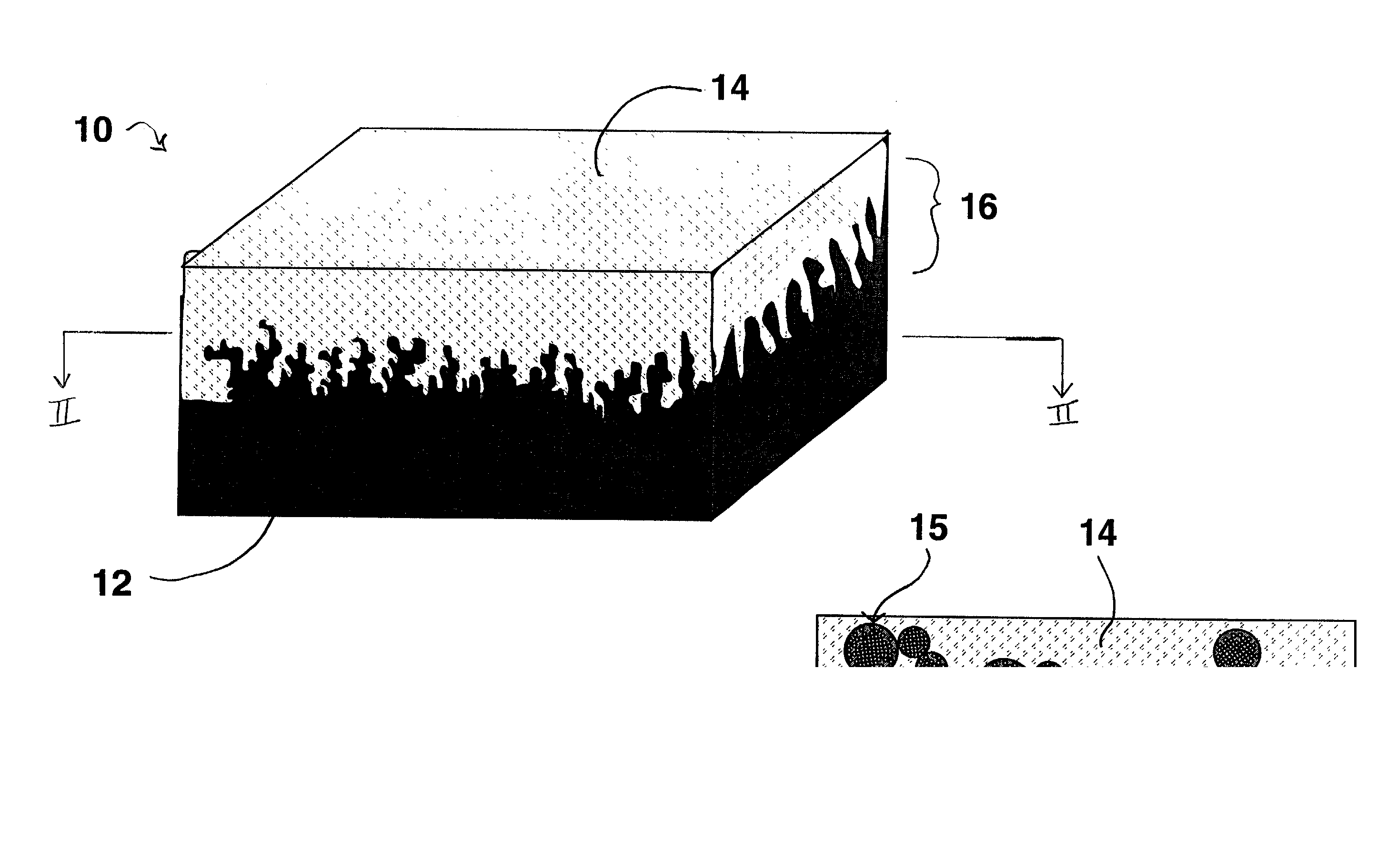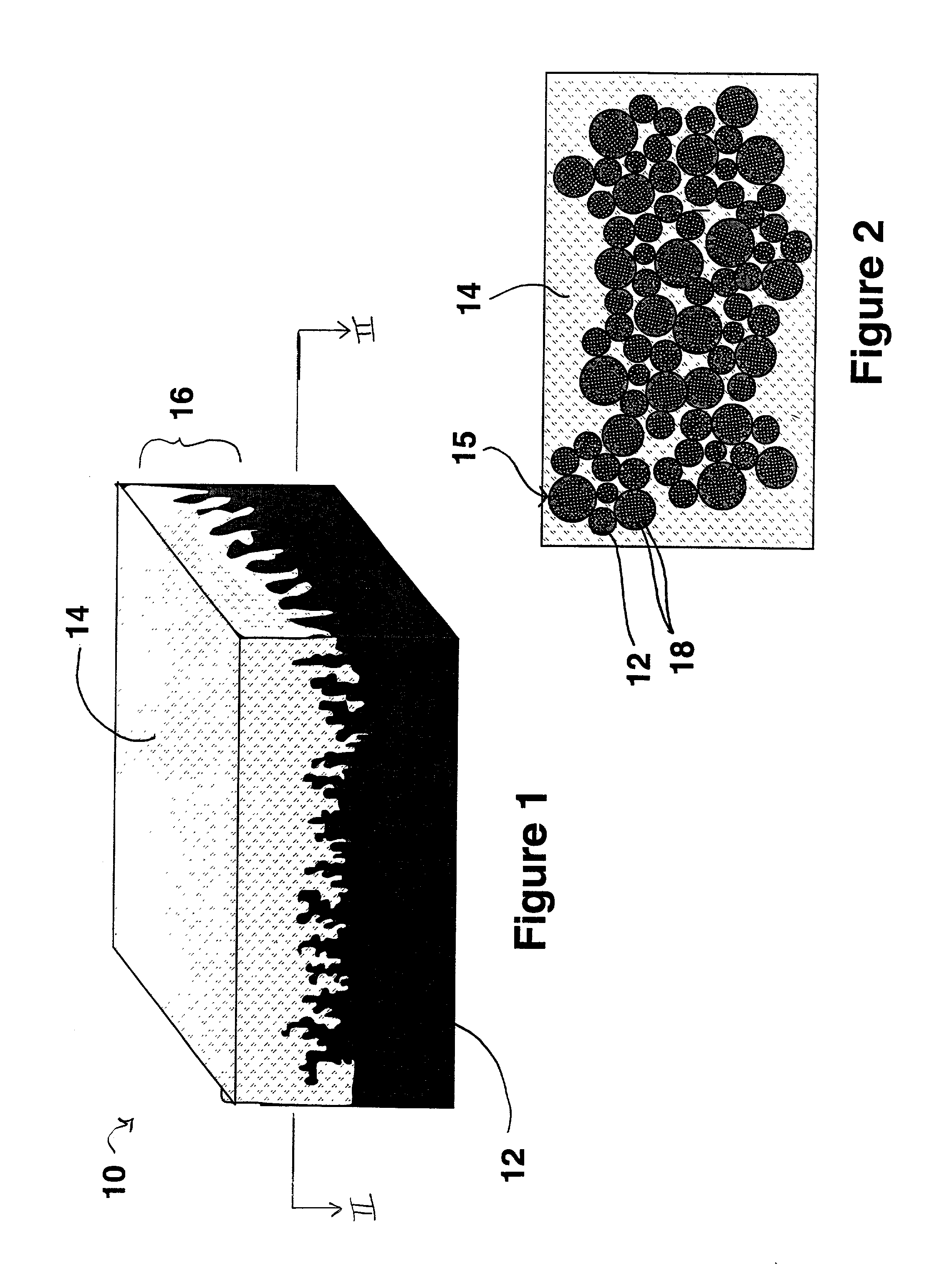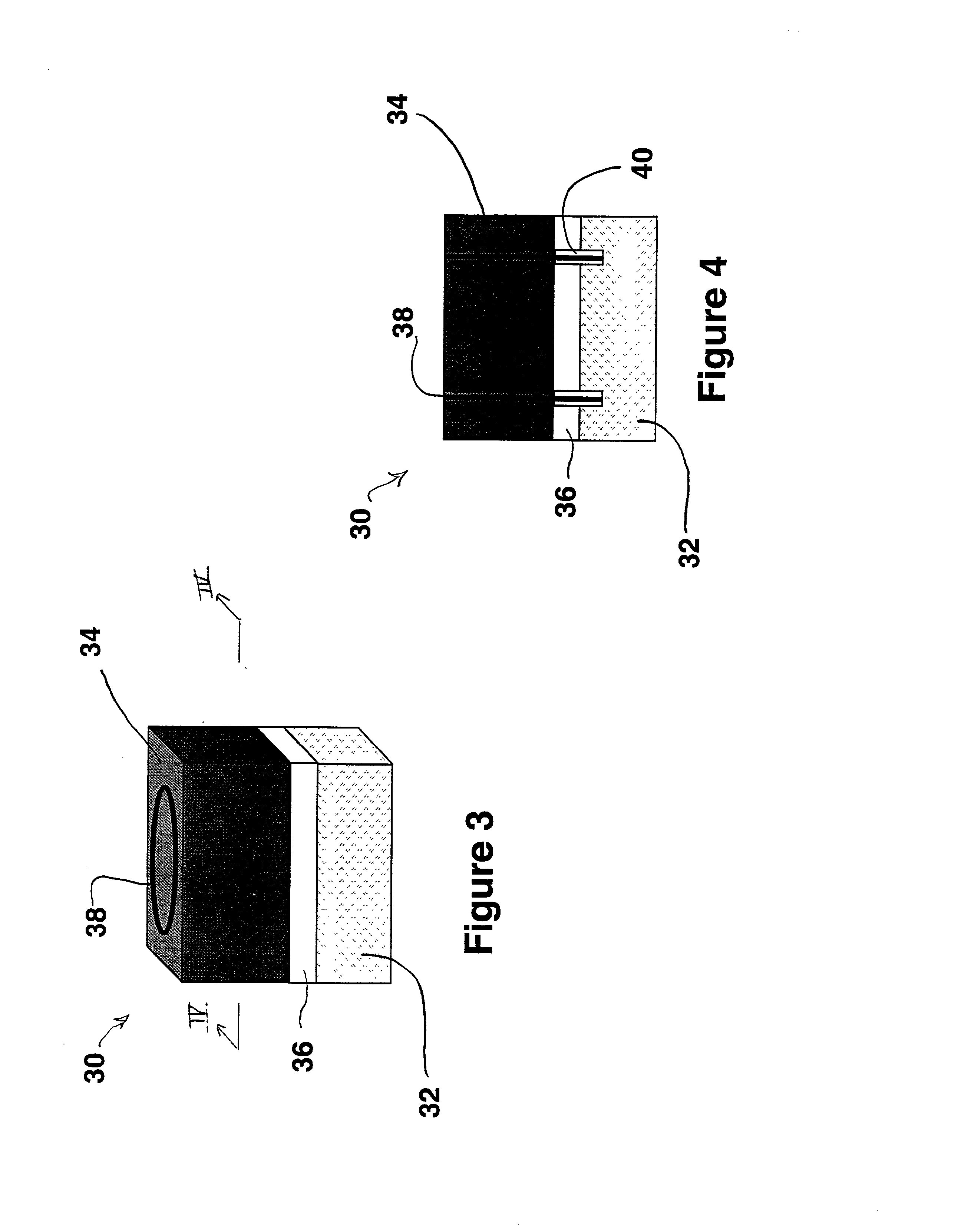Porous ceramic/porous polymer layered scaffolds for the repair and regeneration of tissue
a technology of porous ceramic and polymer layered scaffolds, which is applied in the field of porous ceramic/porous polymer layered scaffolds for tissue repair and regeneration, can solve the problems of abrupt transition between the two layers, device exhibiting an abrupt change in properties, and porous ceramic materials are inherent brittleness
- Summary
- Abstract
- Description
- Claims
- Application Information
AI Technical Summary
Problems solved by technology
Method used
Image
Examples
example 2
[0077] This example describes the preparation of a bi-layered scaffold such as 30 (See FIGS. 3 and 4) composed of a porous polymer phase 34 lyophilized in the presence of a porous ceramic phase 32, wherein the structure also contains a biodegradable reinforcing mesh 38.
[0078] The polymer solution was prepared as described in Example 1. A ceramic tablet, 16.0-mm.times.16.9-mm.times.8.3-mm, was cut from a larger block as described in Example 1. In addition, an approximately 1-mm deep annular groove was cut into one of the 16.0-mm.times.16.9-mm faces of the block using a 10.5-mm circular cutter.
[0079] A polydioxanone (PDS) mesh (Ethicon Inc., Somerville, N.J.) was cut into strips with approximate dimensions of 11 mm.times.50 mm. A strip was loosely cylindrically wound over a 9.5-mm outer diameter rod and secured in a ring configuration by a hot Aaron-ram fine tip (Aaron Medical Industries, Inc., St. Petersburg, Fla.) that was touched to the mesh at either end of the cylinder to weld th...
example 3
[0085] This example describes the preparation of a tri-layered scaffold, e.g., like scaffold 50, but without truss 70 (See FIG. 5), composed of a porous polymer phase 10 sandwiched between two porous ceramic phases 52, 54.
[0086] The polymer solution was prepared as described in Example 1. Two ceramic tablets (.about.12 mm.times..about.12 mm.times..about.2 mm) were cut from a larger block as described in Example 1.
[0087] A first ceramic tablet was placed on the bottom of an aluminum mold with a lip height of 18 mm and a diameter of 70 mm. A pair of 2.0-mm.times.6.3-mm.times.45-mm shims was placed on the bottom of the mold beside the ceramic tablet, parallel thereto and in close proximity. A second set of identical shims was placed over the first set of shims perpendicular thereto, .about.10 mm apart and over opposed top edges of the ceramic tablet. The second ceramic tablet was placed on the second set of shims, aligned with the first ceramic tablet forming a 2-mm space between the t...
example 4
[0091] A tri-layered scaffold having a lyophilized porous polymer phase sandwiched between two porous ceramic phases, wherein the scaffold also contains a biodegradable reinforcing truss may be fabricated in accordance with the same basic procedure outlined in Example 3. The truss used in this Example has a ring form such as that shown in FIG. 3, element 38. The adjacent faces of the ceramic tablets are inscribed with a circular recess as described above in Example 2. A PDS mesh ring of diameter 11 mm and 2 mm thickness is prepared as in Example 2 and opposing ends thereof are inserted into the circular recesses formed in the adjacent faces of the ceramic layers that are stacked in a mold as in Example 3. The polymer is charged in the mold, lyophilized and cleaned from the bottom surface of the scaffold as in Example 3.
PUM
| Property | Measurement | Unit |
|---|---|---|
| porosities | aaaaa | aaaaa |
| pore sizes | aaaaa | aaaaa |
| pore sizes | aaaaa | aaaaa |
Abstract
Description
Claims
Application Information
 Login to View More
Login to View More - R&D
- Intellectual Property
- Life Sciences
- Materials
- Tech Scout
- Unparalleled Data Quality
- Higher Quality Content
- 60% Fewer Hallucinations
Browse by: Latest US Patents, China's latest patents, Technical Efficacy Thesaurus, Application Domain, Technology Topic, Popular Technical Reports.
© 2025 PatSnap. All rights reserved.Legal|Privacy policy|Modern Slavery Act Transparency Statement|Sitemap|About US| Contact US: help@patsnap.com



